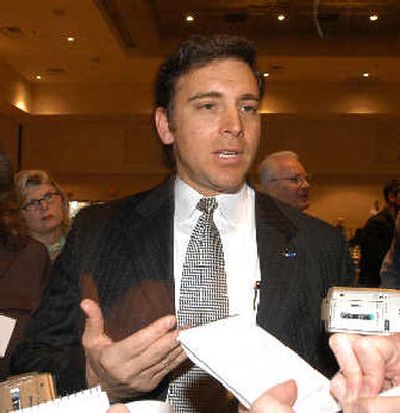GM, Ford seek to cut dealerships

ORLANDO, Fla. — Executives from General Motors Corp. and Ford Motor Co. said Friday they need to reduce the number of dealerships they have as their U.S. market share shrinks.
“Just as we’re right-sizing our manufacturing footprint, we have to right-size our dealer footprint as well,” Mark Fields, Ford’s president of the Americas, said at a conference sponsored by J.D. Power and Associates. The conference was held the day before the start of the annual National Automobile Dealers Association convention.
Mark LaNeve, vice president of sales and marketing for GM, said GM, Ford and DaimlerChrysler AG’s Chrysler Group have a dealer network that was established 50 years ago, versus the newer and smaller networks of competitors like Toyota Motor Corp. and Hyundai Motor Co. That hurts individual GM dealers’ ability to make a profit, he said.
“We’ve made some progress, probably not as quickly as some dealers would like us to, but we have to be respectful of all the situations,” LaNeve said.
GM has 6,800 dealerships for the Pontiac, Buick, GMC, Hummer, Cadillac and Chevrolet brands and 438 Saturn dealers in the United States. Ford has nearly 4,400 Ford, Lincoln and Mercury dealerships. GM controls about 26 percent of the U.S. market, while Ford controls about 18 percent.
By comparison, Toyota has 1,430 U.S. dealerships and controls 13 percent of the U.S. market. Toyota spokeswoman Denise Morrissey said Toyota has commitments from dealers to open another 39 dealerships soon.
Steve Goodall, president and chief executive officer of J.D. Power, said the bloated dealer structure at Ford and GM hasn’t gotten as much attention as other issues they’re facing. After suffering billion-dollar losses in North America in 2005, GM and Ford are planning to close facilities and cut a combined 60,000 jobs in the next several years. They also have won concessions from the United Auto Workers to help with spiraling health care costs.
But Goodall said the number of dealers “is as significant a legacy issue as is the manufacturing, health care, and union issues these companies also face today.”
Suburban dealerships are the most in danger, because customers can easily drive to another dealer, Goodall said. He said dealers can boost their bottom line by adding used car sales, consolidating showrooms and improving their service departments, but that can be difficult.
“No question, if a dealer is not making money, they’re not going to provide the level of service that someone else is,” Goodall said.
Fields and LaNeve said the problem of having too many dealers isn’t as critical as legacy costs and the market share slide they have been experiencing. LaNeve said having a lot of dealers is, in some ways, a competitive advantage.
“Ideally, as we move forward, I think we will take advantage of opportunities as they present themselves to reduce the number of dealers,” LaNeve said. “But it’s not a major initiative. We’re not out actively doing that.”
LaNeve said GM has cut its dealerships by 20 percent in the last 10 years, in part because the company ended the Oldsmobile line. Sales fell about 10 percent in that time period, he said.
Fields said Ford’s top 1,200 stores in major markets have the best sales per dealership in the industry, but the company’s totals are dragged down by small, rural dealerships that sell fewer vehicles but are a critical part of the network.
Fields wouldn’t say where he would want to cut dealerships, but he said Ford could use more dealers in the West and South.